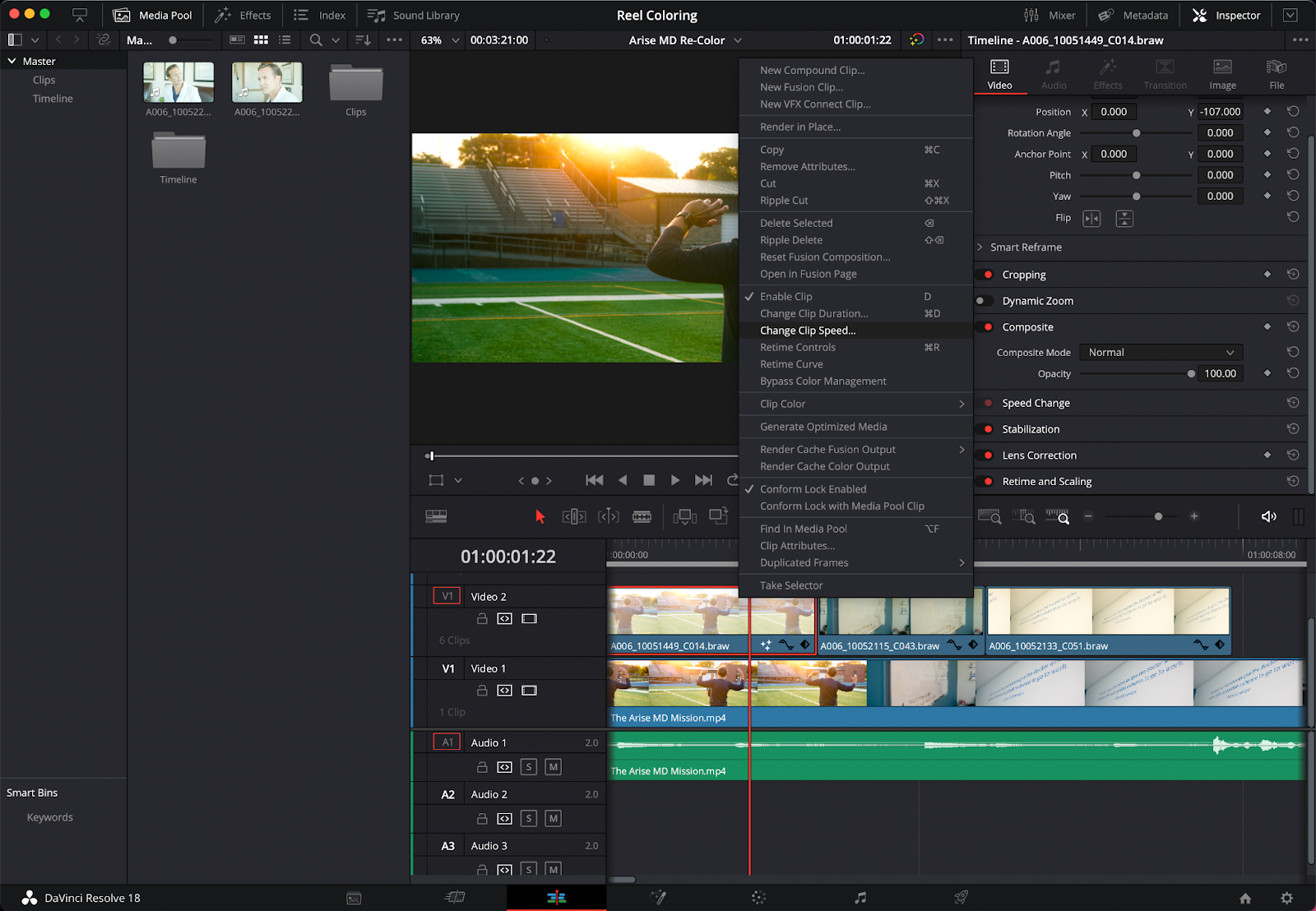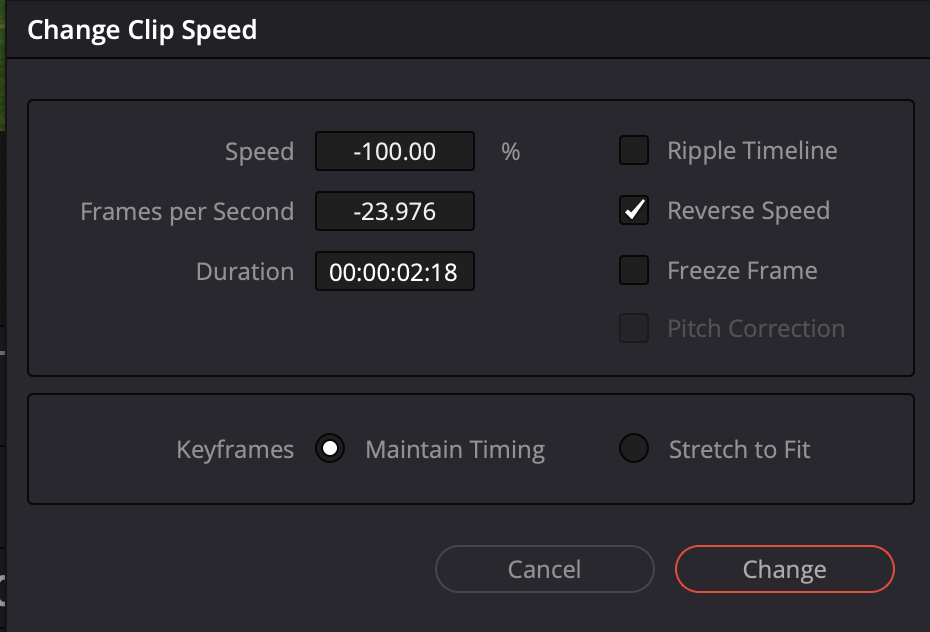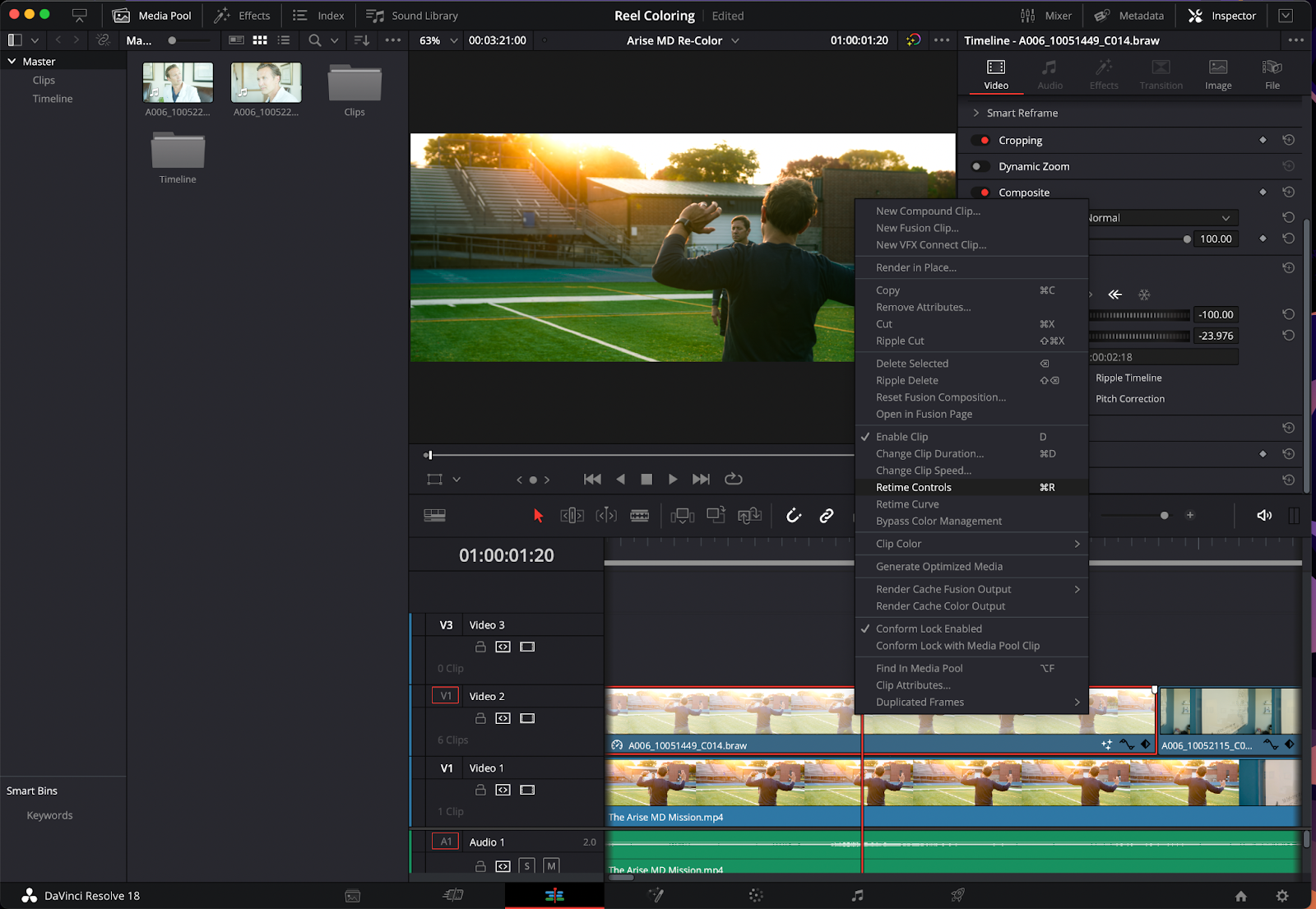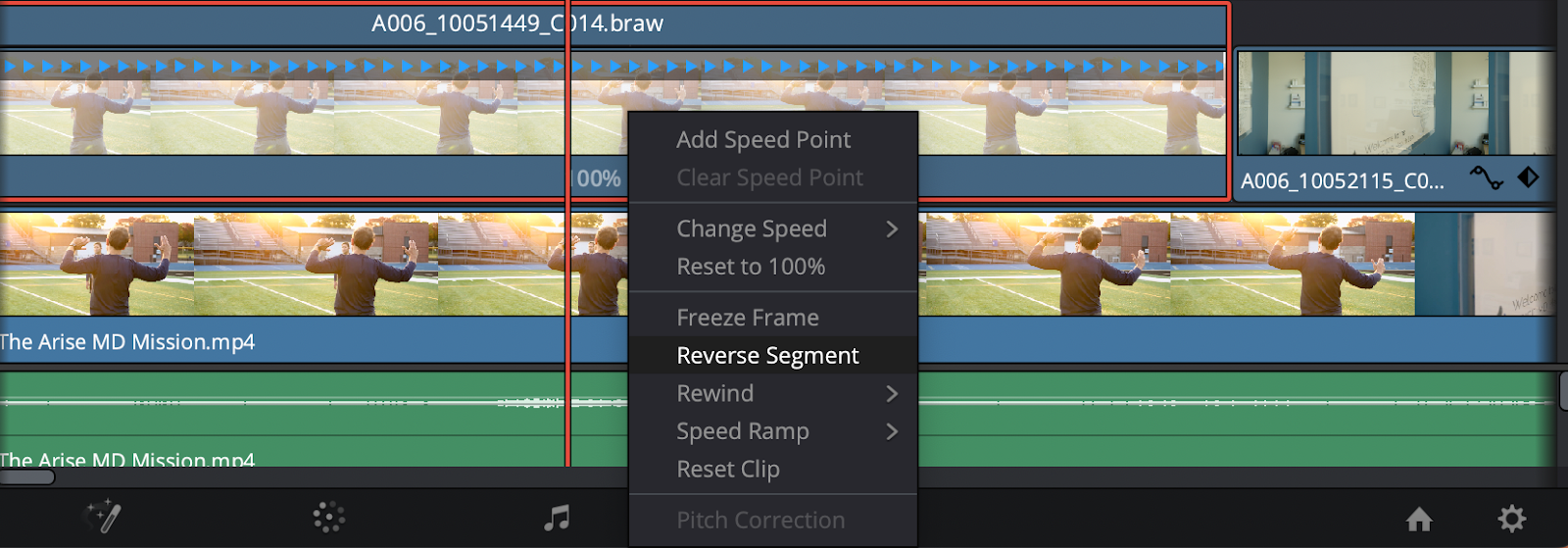

How to Reverse a Clip in DaVinci Resolve
Today’s video editing software has significantly improved many video editing techniques. Among these is the ability to reserve the speed of any given video clip. In the past, reversing a clip would have to be done in the production phases using a specialized editing machine. Now, reversing a clip can be done right in post-production. NLEs such as Blackmagic Design’s DaVinci Resolve, Final Cut Pro, and Adobe Premiere Pro CC have made speed-ramping footage more accessible than ever.
This beginner’s DaVinci Resolve tutorial for macOS and windows devices will go over everything you need to know about how to change clip speed inside DaVinci Resolve 16, DaVinci Resolve 17, and DaVinci Resolve 18.
What is clip speed?
The clip speed of your video is simply how fast or slow your video clip is. Playing around with the speed results in varying effects. One of these is known as speed ramping which is the process of digitally speeding up and then slowing down a video clip.
This is a great technique for corporate videos or for hyper-stylized filmmakers. A speed ramp typically works best by speeding up slow-motion footage for a short period of time before slowing it down again. This technique was made popular in films through Zach Snyder who famously used this technique in the movie 300.
Slow-motion videos are typically best for the speed-ramping effect because of the high frame rate at which it was shot. A higher frame rate video leads to smooth speed ramping because of the number of frames in the video. While speed ramping is still incredibly possible at normal speeds, slow motion will for sure yield the best results.
Speed ramping can also work by reversing the speed of your video clip. What this does is make it look as though your video is getting rewinded. This reverse effect can be used stylistically for a myriad of reasons.
Why reverse your clip and speed ramp? Well, for those in the corporate world of video editing or creating content for social media, speed ramping and rewinding is almost an absolute necessity in a post-production workflow. Speed ramping and reversing footage can be used to bring the audience from one scene to the next in a spectacular fashion or to emphasize a certain point in the video.
In filmmaking, it can be used to make a scene more “epic” seeming than it would normally be. Rewinding footage could be used for comedic effect or to transition from one segment to the next.
If you can, keep speed ramping and reversing footage in mind while shooting your video. Knowing what you’re going to speed ramp in post-production makes the actual speed ramp itself look much better than it normally would.
Reversing a clip in DaVinci Resolve using Change Clip Speed
There are a few different great ways to change the clip speed within DaVinci Resolve that this step-by-step guide will cover. The first method can be done by right-clicking your footage and clicking Change Clip Speed from the drop-down menu.

This will bring up a pop-up window that gives you a couple of different options for changing clip speed. Clicking the Reverse Speed checkbox will activate the reverse video effect. From this menu, you’ll also be able to speed up and slow down your video clip.

You can also go to the Inspector menu to change clip speed as well (located on the right side of the screen in DaVinci Resolve). Open up the Speed Change submenu to access the speed controls of your video clip. Clicking on the rewind arrow will reverse your clip upon playback.

Reversing a clip in DaVinci Resolve using Retime Controls
The next way to reverse a clip in DaVinci Resolve is through retime controls. Retime controls are a touch more complex than the prior method we covered but they give users more control. First, right-click on your video and select Retime Controls. What this will do is bring up a series of blue arrows at the top of your clip. These arrows indicate the direction in which your video is going in.
Your arrows pointing to the right means that your clip is going forward whereas the arrows going toward the left mean that your clip is going in reverse. You can also access retime controls by using the keyboard shortcut ⌘R (or command + R on windows).

At the bottom of your clip is an arrow that you can click which will bring down a small drop-down menu. Clicking on Reverse Segment will reverse the speed of your video clip. You’ll also be able to pull up a retime curve from this menu for even more control so that you can speed ramp and freeze frame (which completely pauses your video clip).

Summary
Reversing speed in apps such as DaVinci Resolve is a simple yet effective way to add production value to your content. If done well, speed reversing can elevate content to an insane degree and make for a rollercoaster of a ride.
If you need captions and subtitles for your videos, check out the Simon Says plugin for DaVinci Resolve. It allows you to seamlessly translate, transcribe, and caption video natively in DaVinci Resolve for 100 different languages.




